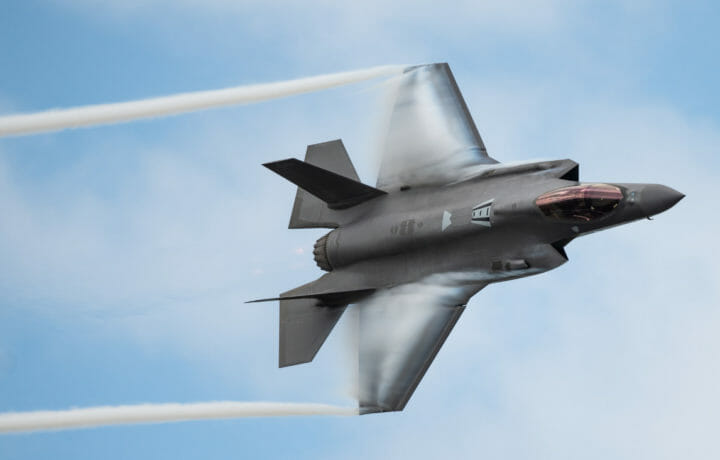The United States Air Force continues to face a pilot shortage, even as the service has introduced bonuses. Last year, it made a policy change that could require pilot training graduates to fly aircraft other than fighters or bombers as the need arises, while the trainees wait for openings.
To further get pilots in the cockpits, the Air Education and Training Command (AETC) announced a partnership with academia to test a new Initial Pilot Training (IPT) model. AETC’s mission is to “recruit, train and educate Airmen to deliver air power for America,” and it is getting some help.
Pilot training In Action
The University of North Dakota Aerospace Foundation Flight Training Program in Mesa, AZ, and the Brunner Aerospace Flight Training Program in Georgetown, TX, recently provided training to 65 U.S. Air Force student pilots, who took part in a pair of Small Group Tryouts (SGTOs) as part of AETC’s effort to revise pilot training for the service as well as other nations.
According to the Air Force, the IPT SGTOs utilized Federal Aviation Administration (FAA) Part 141 certified courses to help train the service’s student pilots. The trainees were taught basic airmanship, instrument, and multi-engine flying competencies. SGTO calls for IPT students to complete their training in 139 calendar days, during which time they will log approximately 110 flying hours while earning their private pilot certificate, instrument rating, and multi-engine rating.
“The initial results are positive,” said Brig. Gen. Matthew Leard, AETC’s Plans, Programs, Requirements and International Affairs director. “Partnership with the civil aviation sector, where expertise and capacity exist, allows the Air Force to focus on teaching military-specific aviation competencies.”
Ready for the Next Phase of Training
Those students in the first class of SGTO were able to advance to the Undergraduate Pilot Training (UPT) utilizing a revised T-6A [Texan II] syllabus at Columbus Air Force Base (AFB), Mississippi, last September. A second class of SGTO students is currently projected to begin T-6 training in March of 2025, also at Columbus AFB.
The revised UPT program will see students train with military instructors for 108 training days and log approximately 57 flying and 50 simulator hours in the T-6A Texan II. They will employ the syllabus that was built upon the competencies the trainee pilots learned during the IPT SGTO, with a focus on military-specific aviation competencies. Upon completion of the program, students will earn their military pilot wings.
“The model we are testing allows for increased throughput to meet Air Force pilot production requirements, and initial data shows it does so while also increasing the quality of our graduates,” Leard added. “Additionally, it establishes relationships with the commercial aviation training enterprise to create future capacity, if needed.”
Expanding the Program
If the effort to work with academia proves successful, AETC will explore further partnerships with several public universities that currently offer FAA Part 141 flight training and have the available capacity to conduct additional SGTOs in 2025.
“All IPT SGTO students will continue to be tracked through the completion of graduate Formal Training Units,” the Air Force explained and added that additional data is being collected, analyzed, and combined with lessons learned. This will help inform future decisions to support the Air Force’s goal to produce 1,500 pilots annually.
Though this is a new initiative that took off in 2024, the Air Force has a history of partnering with civilian flying schools going back to the Second World War, when the U.S. Army Air Corps (later Army Air Forces) successfully partnered with civilian pilot schools to provide primary flight training.
According to the Air Force, the U.S. military had a backlog of 100,000 applicants and opted to use the College Training Program (CTP) at 153 colleges across the country during the war. The Air Corps went on to produce about 200,000 pilots with half having spent time in a CTP.
The Future of Air Force Pilots and National Security
While the Air Force’s backlog isn’t quite so “daunting,” the air service has struggled to meet its goal of producing 1,500 pilots per year, for several years.
“Just like the Airmen before us, we are working closely with industry to increase our capacity to produce pilots at the speed of need to support our national security requirements,” said Lt. Gen. Brian Robinson, AETC commander. “The threats are growing, and we are out of time. AETC is harnessing the power of American academia and industry to rapidly reoptimize our ability to train and develop Airmen for Great Power Competition. If called upon, we will be ready to defend our nation; and if there is a fight, we will win.”
AETC is one of the nine Major Commands (MAJCOM) of the U.S. Air Force. It reports to Headquarters, the United States Air Force. It was established on July 1, 1993, as a realignment of the former Air Training Command and Air University, as the primary training and professional education command of the U.S. Air Force. Its personnel include 48,000 active duty and Air Reserve Component members, and 14,000 civilians – while it is responsible for around 1,600 aircraft.




